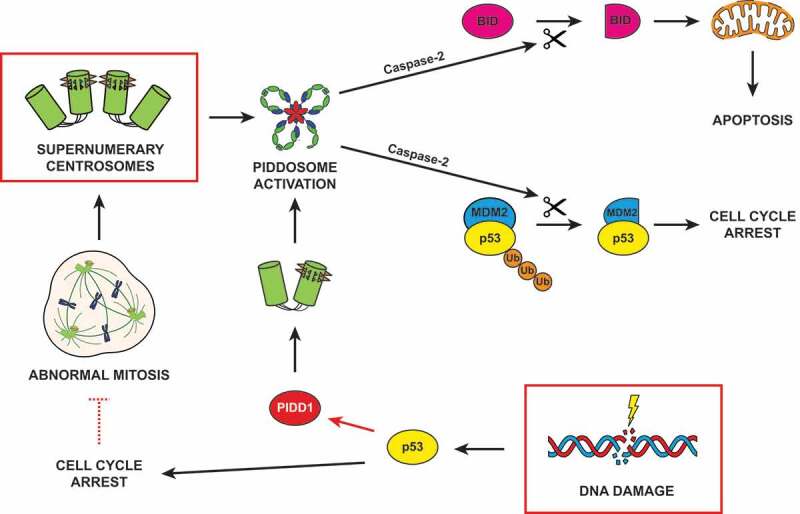Figure 1.

Sources and consequences of PIDDosome activation. Supernumerary centrosomes lead to Caspase-2 activation via the PIDDosome, resulting into either TP53 (tumor suppressor protein p53, best known as p53)-dependent cell cycle arrest or apoptosis. DNA damage can induce PIDDosome activation following two different paradigms. In the first one, p53 stabilization transactivates PIDD1 (the gene coding for PIDD1, p53-inducible protein with a death domain), resulting in a global increase in its cellular levels (red arrow). The centrosome, locally concentrating PIDD1 active moieties, promotes PIDDosome assembly. In the second scenario, cells which halted their cell cycle during DNA damage response can escape this proliferative block and reenter mitosis (red dashed inhibitory arrow). Proliferation in the presence of unrepaired DNA damage or an under-replicated genome frequently leads to abnormal cell division and accumulation of supernumerary centrosomes, which eventually drive PIDDosome assembly. Caspase-2 activation promotes the proteolytic cleavage of its two main substrates, MDM2 (mouse double minute 2) and BID (BH3 interacting-domain death agonist), culminating in cell cycle arrest or apoptosis, respectively
